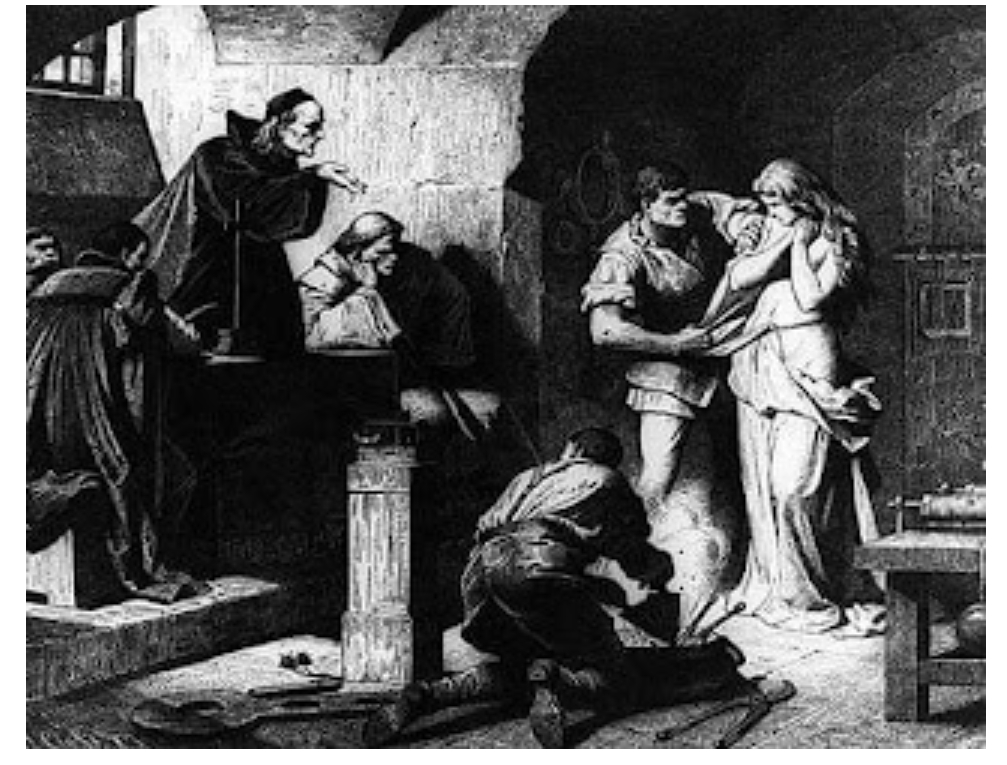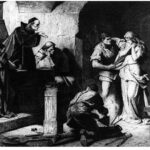
In the middle ages torture was used to extract information, force confessions, punish suspects, frighten opponents, and satisfy personal hatred.
The word ‘torture’ comes from the French torture, originating in the Late Latin tortura and ultimately deriving the past participle of torquere meaning ‘to twist’. Many tortures rely on a twisting of the limbs, twisting ligatures, or turning screw mechanisms.
For the most part capital punishments in Christendom have been deliberately painful. Severe historical penalties include the breaking on the wheel, boiling to death, burning, crucifixion, crushing, disembowelment, dismemberment, flaying, impalement, sawing, scaphism and stoning.

Historically, ancient Greeks and Romans used torture for interrogation. Until the second century AD, torture was used only on slaves.. A slave’s testimony was admissible only if extracted by torture, on the assumption that slaves could not be trusted to reveal the truth voluntarily.
Medieval and early modern European courts used torture, depending on the accused’s alleged crime and social status. Torture was deemed a legitimate means to extract confessions or to obtain the names of accomplices or other information about a crime. In theory, it was permitted only if there was already half-proof against the accused. Defendants already sentenced to death would be tortured to force them to disclose the names of accomplices.
Torture was used almost exclusively for the crime of treason. In civil society this meant in practice that it was generally restricted to monarchs and the highest nobles. In the Church, matters were different. The Church taught that any deviation from orthodoxy amounted to lèse majesté against God, and therefore treason again the King of Kings. This meant that in contrast to civil society, treason and therefore torture were common in the Church. It was not only the Inquisition that practised torture but it is the Inquisition that has lodged in the popular mind as masters of the trade.
As many historians have noted, the most vicious procedures in Medieval times were inflicted on devout Christians by even more devout Christians. Dominicans gained a reputation as the most fearsomely innovative torturers.
Torture had long been practised by bishops, but it was formally authorised for the Medieval Inquisition in 1252. It should have ended in 1816 when a papal bull forbade its use, but secret torture continued in the Papal States until they were seized by French Forces in the 1870s.
Torture was usually conducted in secret, often in secure underground dungeons. In contrast, torturous executions were usually public, and drew large crowds of spectators. Public holidays were often declared and free penances given to spectators to ensure large attendences.
Deliberately painful methods of execution for severe crimes were taken for granted as part of justice until the development of Humanism in 17th century philosophy, and “cruel and unusual punishment” was denounced in the English Bill of Rights of 1689. The Age of Enlightenment in the western world further developed the idea of universal human rights. The adoption of the Universal Declaration of Human Rights in 1948 marks the recognition of a general ban of torture by all UN member states










Leave a Reply